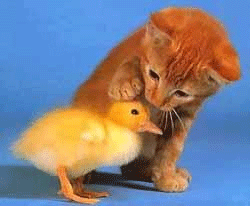
Twitter Backgrounds

Twitter Backgrounds

Twitter Backgrounds
Intercultural Communication
Social norms:
(Retrieve from:http://changingminds.org/explanations/theories/social_norms.htm)
Types of Social Norms
![]() MORES=are any given society's particular norms, virtues or values.
MORES=are any given society's particular norms, virtues or values.
= Customary behavioral patterns which have taken on a moralistic values.
(Example: respect for authority, marriage, sex behavior prototype, etc…)
![]() LAWS=is a structure of rules, usually enforced through a set of institutions. (
LAWS=is a structure of rules, usually enforced through a set of institutions. (
=The most formal and important norms of society.
(Example: The freedom of the Press, etc…)
![]() FOLKWAYS= a philosophical and ethical generalizations as to societal benefit which are suggested by them, and inherent in them as they grow (W. G. Summer, Folkways: A Study of the Sociological Importance of Manners, Customs, Mores, and Morals, 1907, p. 30.)
FOLKWAYS= a philosophical and ethical generalizations as to societal benefit which are suggested by them, and inherent in them as they grow (W. G. Summer, Folkways: A Study of the Sociological Importance of Manners, Customs, Mores, and Morals, 1907, p. 30.)
= Behavior blueprint of society which are organized and repetitive.
= There is no feeling of right and wrong attached to the individual.
(Example: The new sayings “Salad oh init pa”)
![]() RITUALS= is a set of actions, performed mainly for their symbolic value. It may be prescribed by a religion or by the traditions of a community (Retrieve from: http://en.wikipedia.org/wiki/Rituals).
RITUALS= is a set of actions, performed mainly for their symbolic value. It may be prescribed by a religion or by the traditions of a community (Retrieve from: http://en.wikipedia.org/wiki/Rituals).
(Example: Ceremonies, Holidays, Religious activity, etc…)
Preferred by: G-one T. Paisones
Crafting the Curriculum
(Bilbao, 2008, p. 60-64)
RESPONDED BY: G-one Paisones
Activity 1: Curriculum Design in MUST (Mindanao University of Science and Technology)
The curriculum designs being used in Mindanao University of Science and Technology are the following:
· Vertical design –the vertical arrangement of course syllabus
· Discipline design – teaching scientific and technological subjects are the discipline
· Subject design – the subject content itself
Activity 2: Lesson Plan
From: Mr. JERRY P. RAMO
Subjects: Chemistry and Physics
The curriculum designs being used by Mr. Ramo in his lesson plan are the following:
· Vertical design –the objectives, strategies, evaluation and assessment are arranged vertically
· Subject design – focusing only to the subjects – Physics and Chemistry
Reflection:
The impact of the curriculum design in teaching and learning is the well-arranged or proper arrangement of the curriculum to facilitate learning.
The varied designs make difference in the way I teach because through these; I can organize my lesson very well, know what strategies of teaching I could use and easy managing the flow of the class – from discussion to assessment of the learners.
Behaviorism: Pavlov, Thorndike, Watson and Skinner
(Corpuz and Lucas, 2007, Facilitating Learning, Module 10)
Responded by: G-one Paisones
ACTIVITY:
When I heard an academic competition of a school; I remembered Mrs. Degamo because she was my mentor in a scholastic competition called Science Investigatory Project. We won the second place on that time; indeed I was very happy because all faculties as well all students headed by Mrs. Degamo acknowledge and congratulated us on the merits we had received.
Mrs. Degamo also remembered me when there is a Science Investigatory Project competition among all participated schools; she often asked me for aid as an editor of their paper works of the said science project.
Thorndike’s Connection:
Topic: Microsoft Power Point
Grade/year Level: Fourth Year High School
| Primary Law | How I would apply the Primary Law |
| Law of Readiness | As a teacher I would motivate the learner to study in advance the Microsoft Power Point. |
| Law of Effect | By using positive reinforcement, I would add an extra time to the learners in surfing and scrutinizing the computer. I would also acknowledge their curiosity and skills in computer. |
| Law of Exercise | As teacher I would stretch and keeping on practicing the learners ability and performance to make them equip and capable to use Microsoft Power Point. |
LEARNING:
From this module on Behaviorism: Pavlov, Thorndike, Skinner, I learned that Thorndike’s theory on connectionism, stated that learning has taken place when a strong connection or bond between stimulus and response is formed.
I learned also the three primary laws on learning such as:
· Law of Readiness
· Law of Effect
· Law of Exercise
In the Law of Readiness – the teacher should motivate the learners so that they are ready in any type of classroom teaching methods.
In Law of Effect – the teacher should acknowledge the strengths of the learners.
In Law of Exercise – the teacher should conduct an exercise of what had been learned by the learners to retain it in their mines.
Learners with Exceptionalities
(Corpuz and Lucas<2007> Facilitating Learning, Module 9)
Responded by: G-one Paisones
From the module on Learners with Exceptionalities, I learned that as a teacher, I should considered and made other teaching strategies that would suit to the needs of the students with have learning disability.
I also learned the basic categories of exceptional learners such as:
· COGNITIVE DIFFICULTIES
§ Learning Disabilities
-Dyslexia
-Dyscalculia
-Dysgraphia
§ Attention-Deficit Hyperactivity Disorder
§ Emotional/Conduct Disorder
§ Autism
§ Mental Retardation
· PHYSICAL DISABILITIES
§ Physical and Health Impairments
-Limited energy and strength
-Reduced mental alertness
-Little muscle control
§ Severe Disabilities
§ Visual Impairments
§ Hearing Impairments
NOTE: “I neither do nor considered Giftedness as neither physical disabilities nor health impairments”
I had also learned that through demonstrating “people first” language when referring to the exceptional learners; that will us what conditions people have, not what they are.